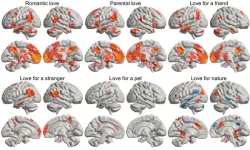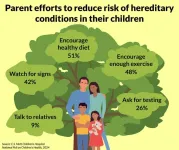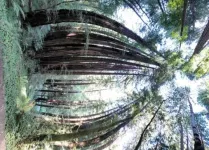(Press-News.org) Research Highlights:
People diagnosed with unruptured cerebral aneurysms (weakened areas in brain blood vessels) who are being monitored without treatment have a higher risk of developing mental illness compared to those who have not been diagnosed with a cerebral aneurysm. The largest impact was among adults younger than age 40.
The study conducted in South Korea found that the psychological burden caused by the diagnosis of an unruptured aneurysm may contribute to the development of mental health conditions, such as anxiety, stress, depression, eating disorders, bipolar disorder, insomnia and alcohol or drug misuse over a 10-year period.
The researchers suggest providing support to help patients cope with the stress of the diagnosis may be an important part of comprehensive care.
Embargoed until 4 a.m. CT/5 a.m. ET, Monday, Aug. 26, 2024
DALLAS, Aug. 26, 2024 — Among people who had aneurysms (weakened areas in brain blood vessels), the risk of developing a mental health condition was higher than among peers without an aneurysm. The highest risk was seen in patients younger than age 40, according to research published today in Stroke, the peer-reviewed scientific journal of the American Stroke Association, a division of the American Heart Association.
An unruptured intracranial aneurysm occurs when the wall of a blood vessel in the brain becomes weak and bulges out, posing a potential risk of future rupture and life-threatening bleeding in the brain.
“As a neurosurgeon who treats cerebral aneurysms, I often see people who do not undergo surgery yet feel fear and/or anxiety about their condition before each imaging or screening test to monitor their condition. Even when it is medically judged and explained that follow-up observation is the best course for their aneurysm rather than surgery, they still worry about the very slim chance of developing a fatal brain bleed,” said study co-author Na-Rae Yang, M.D., Ph.D., an assistant professor of neurosurgery in the department of neurosurgery at Ewha Womans University Mokdong Hospital, Ewha Womans University College of Medicine in Seoul, South Korea.
”This study did not specifically target brain aneurysms that were small enough not to require treatment and had a low probability of rupture. We included all diagnosed, untreated brain aneurysms that were being followed,” Yang said. “The reason for not treating and only following up may be that the aneurysm is small and unlikely to rupture, making treatment unnecessary. However, the decision is likely based on various circumstances, including the patient's overall condition, and such specific reasons were not captured in this study group.”
While other studies have observed patterns of stress and anxiety in patients living with an aneurysm diagnosis, the researchers said this is one of the first large studies to estimate the risk of a mental health condition after aneurysm diagnosis.
In this study, researchers examined data from the National Health Information Database in South Korea, which includes over 20 years (2004 to 2024) of health data for more than 85,000 people who received care from hospitals, clinics and pharmacies throughout the country. It is one of the world’s largest and most comprehensive health information databases. More than six months after diagnosis with an aneurysm, researchers compared how many people developed a mental health condition, such as anxiety, stress, depression, bipolar and eating disorders, insomnia and alcohol or drug misuse. They then compared them to the rate of mental health condition diagnoses among similar adults without aneurysm who received care for an upper respiratory infection.
The analysis took place over a 10-year period and found, when compared to people without an aneurysm:
people with an aneurysm were 10% more likely to be diagnosed with a mental health condition;
the risk of a mental health condition was particularly pronounced in people with an aneurysm under the age of 40; and
in cases where a mental health condition was diagnosed by a psychiatrist, the difference was even greater, showing a three-fold increased risk.
“Our finding of a higher rate of a severe mental health condition in younger adults with aneurysm underscores the significant psychological burden for this group of patients who may already be dealing with other life stressors, such as building their career and/or raising a family,” Yang said. “This elevated rate of mental health conditions suggests that younger people might be particularly vulnerable, highlighting the need for targeted mental health support and interventions for this age group. This includes providing clear explanations and tailoring treatment decisions for each person,” Yang said.
An aneurysm may be diagnosed when a person has imaging (such as a CT scan or MRI) to evaluate neurological symptoms (such as a headache or vision changes), or it can be discovered by chance if imaging is done for an unrelated issue.
Study limitations include that the analysis was based on diagnostic and prescription codes in a national database, which may be imprecise and may not reflect the nuances of individual patient care and mental health status. In addition, the specific size and location of aneurysms were not considered. This study design highlights a possible association but cannot establish a cause-and-effect relationship between an aneurysm diagnosis and later mental health status. This study population was from South Korea, so the findings may not be consistent with populations in other countries.
Study details, background or design:
The study compared the occurrence of several mental health conditions over a 10-year period in 85,438 adults (51% male; average age of 56 years) with untreated aneurysms diagnosed between 2011 and 2019, to more than 331,000 (49% male; average age of 57) without aneurysms treated for acute upper respiratory infections during the same period. The adults without aneurysms were matched to the diagnosis group for age, sex, economic status and the presence of other medical conditions.
Mental health conditions were defined as a diagnosis of anxiety, stress, depressive disorder, bipolar disorder, eating disorder, insomnia, or alcohol or substance misuse according to the International Classification of Diseases coding database. Cases defined as having been diagnosed with a mental health condition plus receiving treatment from a psychiatrist included psychotherapy with or without medication.
Differences in the risk of mental health conditions were calculated after adjusting for several factors, including age, sex, health insurance status, disability, other medical conditions, smoking, alcohol consumption or obesity.
Co-authors, disclosures and funding sources are listed in the manuscript.
Studies published in the American Heart Association’s scientific journals are peer-reviewed. The statements and conclusions in each manuscript are solely those of the study authors and do not necessarily reflect the Association’s policy or position. The Association makes no representation or guarantee as to their accuracy or reliability. The Association receives funding primarily from individuals; foundations and corporations (including pharmaceutical, device manufacturers and other companies) also make donations and fund specific Association programs and events. The Association has strict policies to prevent these relationships from influencing the science content. Revenues from pharmaceutical and biotech companies, device manufacturers and health insurance providers and the Association’s overall financial information are available here.
Additional Resources:
Multimedia is available on the right column of release link http://newsroom.heart.org/news/knowing-you-have-a-brain-aneurysm-may-raise-anxiety-risk-other-mental-health-conditions?preview=5a512e64912c758120d9c18c512c74ba
After Aug. 26, view the manuscript online.
AHA news release: Some blood pressure medicine may decrease the aneurysm rupture risk for people with high blood pressure (June 2022)
AHA news release: Mental health is important to overall health, and heart disease prevention and treatment (Jan. 2021)
AHA scientific statement: Psychological Health, Well-Being, and the Mind-Heart-Body Connection
AHA health information: Types of Aneurysms
Follow AHA/ASA news on X @HeartNews
Follow news from the Stroke journal @StrokeAHA_ASA
###
About the American Stroke Association
The American Stroke Association is devoted to saving people from stroke — the No. 2 cause of death in the world and a leading cause of serious disability. We team with millions of volunteers to fund innovative research, fight for stronger public health policies and provide lifesaving tools and information to prevent and treat stroke. The Dallas-based association officially launched in 1998 as a division of the American Heart Association. To learn more or to get involved, call 1-888-4STROKE or visit stroke.org. Follow us on Facebook, X.
END
Knowing you have a brain aneurysm may raise anxiety risk, other mental health conditions
Even if the risk is small, the potential of a debilitating brain vessel rupture may be a psychological burden, finds new study in the Stroke journal
2024-08-26
ELSE PRESS RELEASES FROM THIS DATE:
Non-cognitive skills: the hidden key to academic success
2024-08-26
A new Nature Human Behaviour study, jointly led by Dr Margherita Malanchini at Queen Mary University of London and Dr Andrea Allegrini at University College London, has revealed that non-cognitive skills, such as motivation and self-regulation, are as important as intelligence in determining academic success. These skills become increasingly influential throughout a child's education, with genetic factors playing a significant role. The research, conducted in collaboration with an international team of experts, suggests that fostering non-cognitive skills alongside cognitive abilities could significantly improve educational ...
Finding love: Study reveals where love lives in the brain
2024-08-26
We use the word ‘love’ in a bewildering range of contexts — from sexual adoration to parental love or the love of nature. Now, more comprehensive imaging of the brain may shed light on why we use the same word for such a diverse collection of human experiences.
‘You see your newborn child for the first time. The baby is soft, healthy and hearty — your life’s greatest wonder. You feel love for the little one.’
The above statement was one of many simple scenarios presented to fifty-five parents, self-described as being in a loving relationship. Researchers from Aalto University utilised ...
Researchers develop high-entropy non-covalent cyclic peptide glass
2024-08-26
Researchers from the Institute of Process Engineering (IPE) of the Chinese Academy of Sciences have developed a sustainable, biodegradable, biorecyclable material: high-entropy non-covalent cyclic peptide (HECP) glass. This innovative glass features enhanced crystallization-resistance, improved mechanical properties, and increased enzyme tolerance, laying the foundation for its application in pharmaceutical formulations and smart functional materials. This study was published in Nature Nanotechnology on ...
Mapping the sex life of Malaria parasites at single cell resolution, reveals the genetics underlying Malaria transmission
2024-08-26
Malaria is caused by a eukaryotic microbe of the Plasmodium genus, and is responsible for more deaths than all other parasitic diseases combined. In order to transmit from the human host to the mosquito vector, the parasite has to differentiate to its sexual stage, referred to as the gametocyte stage. Unlike primary sex determination in mammals, which occurs at the chromosome level, it is not known what causes this unicellular parasite to form males and females. New research at Stockholm University has implemented high-resolution genomic tools to map the global repertoire of genes ...
Communicating consensus strengthens beliefs about climate change
2024-08-26
Climate scientists have long agreed that humans are largely responsible for climate change. However, people often do not realize how many scientists share this view. A new 27-country study published in the journal Nature Human Behaviour finds that communicating the consensus among scientists can clear up misperceptions and strengthen beliefs about climate change.
The study is co-led by Bojana Većkalov at the University of Amsterdam and Sandra Geiger of the University of Vienna. Kai Ruggeri, professor of health policy and management at Columbia University Mailman School of Public Health, is the corresponding author.
Scientific consensus identifying humans as primarily ...
Almost half of FDA-approved AI medical devices are not trained on real patient data
2024-08-26
Artificial intelligence (AI) has practically limitless applications in healthcare, ranging from auto-drafting patient messages in MyChart to optimizing organ transplantation and improving tumor removal accuracy. Despite their potential benefit to doctors and patients alike, these tools have been met with skepticism because of patient privacy concerns, the possibility of bias, and device accuracy.
In response to the rapidly evolving use and approval of AI medical devices in healthcare, a multi-institutional team of researchers at the UNC School of Medicine, Duke University, Ally Bank, Oxford University, Colombia University, and University of Miami have been on a mission to build ...
Does the extent of structural racism in a neighborhood affect residents’ risk of cancer from traffic-related air pollution?
2024-08-26
High levels of traffic-related air pollutants have been linked with elevated risks of developing cancer and other diseases. New research indicates that multiple aspects of structural racism—the ways in which societal laws, policies, and practices systematically disadvantage certain racial or ethnic groups—may contribute to increased exposure to carcinogenic traffic-related air pollution. The findings are published by Wiley online in CANCER, a peer-reviewed journal of the American Cancer Society.
Most studies suggesting that structural racism, which encompasses factors such as residential segregation and differences in economic status and homeownership, may influence ...
2 in 3 parents want help preventing their child from developing hereditary health conditions
2024-08-26
ANN ARBOR, Mich. – Among things many families don’t wish to pass down to their children and grandchildren: medical issues.
One in five parents say their child has been diagnosed with a hereditary condition, while nearly half expressed concerns about their child potentially developing such a condition, a new national poll suggests.
And two thirds of parents want their healthcare provider to suggest ways to prevent their child from developing a health problem that runs in the family, according to the University of Michigan Health C.S. Mott Children’s Hospital National ...
Could psychedelic-assisted therapy change addiction treatment?
2024-08-26
by Amy Norton
PISCATAWAY, NJ – After years of being seen as dangerous “party drugs,” psychedelic substances are receiving renewed attention as therapies for addiction -- but far more research is needed, according to a new special series of articles in the Journal of Studies on Alcohol and Drugs, published at Rutgers University.
Psychedelics are substances that essentially alter users’ perceptions and thoughts about their surroundings and themselves. For millennia, indigenous cultures have used plants with psychedelic properties in traditional medicine and spiritual rituals. And for a time in the mid-20th ...
Sustaining oyster farming with sturdier rafts
2024-08-26
Amid the rising human population and pressure on food supplies, the world can’t be everyone’s oyster. But perhaps there might be more oysters to eat if an Osaka Metropolitan University-led research team’s findings mean sturdy plastic rafts will be used in their farming.
Conventional oyster farming uses bamboo rafts with additional flotation devices such as Styrofoam. Though relatively affordable, these rafts can be damaged in typhoons. The OMU-led researchers propose a polyethylene raft that keeps costs manageable but is about five times more durable than a bamboo raft.
OMU Graduate School of Engineering Associate ...
LAST 30 PRESS RELEASES:
Injectable breast ‘implant’ offers alternative to traditional surgeries
Neuroscientists devise formulas to measure multilingualism
New prostate cancer trial seeks to reduce toxicity without sacrificing efficacy
Geometry shapes life
A CRISPR screen reveals many previously unrecognized genes required for brain development and a new neurodevelopmental disorder
Hot flush treatment has anti-breast cancer activity, study finds
Securing AI systems against growing cybersecurity threats
Longest observation of an active solar region
Why nail-biting, procrastination and other self-sabotaging behaviors are rooted in survival instincts
Regional variations in mechanical properties of porcine leptomeninges
Artificial empathy in therapy and healthcare: advancements in interpersonal interaction technologies
Why some brains switch gears more efficiently than others
UVA’s Jundong Li wins ICDM’S 2025 Tao Li Award for data mining, machine learning
UVA’s low-power, high-performance computer power player Mircea Stan earns National Academy of Inventors fellowship
Not playing by the rules: USU researcher explores filamentous algae dynamics in rivers
Do our body clocks influence our risk of dementia?
Anthropologists offer new evidence of bipedalism in long-debated fossil discovery
Safer receipt paper from wood
Dosage-sensitive genes suggest no whole-genome duplications in ancestral angiosperm
First ancient human herpesvirus genomes document their deep history with humans
Why Some Bacteria Survive Antibiotics and How to Stop Them - New study reveals that bacteria can survive antibiotic treatment through two fundamentally different “shutdown modes”
UCLA study links scar healing to dangerous placenta condition
CHANGE-seq-BE finds off-target changes in the genome from base editors
The Journal of Nuclear Medicine Ahead-of-Print Tip Sheet: January 2, 2026
Delayed or absent first dose of measles, mumps, and rubella vaccination
Trends in US preterm birth rates by household income and race and ethnicity
Study identifies potential biomarker linked to progression and brain inflammation in multiple sclerosis
Many mothers in Norway do not show up for postnatal check-ups
Researchers want to find out why quick clay is so unstable
Superradiant spins show teamwork at the quantum scale
[Press-News.org] Knowing you have a brain aneurysm may raise anxiety risk, other mental health conditionsEven if the risk is small, the potential of a debilitating brain vessel rupture may be a psychological burden, finds new study in the Stroke journal





